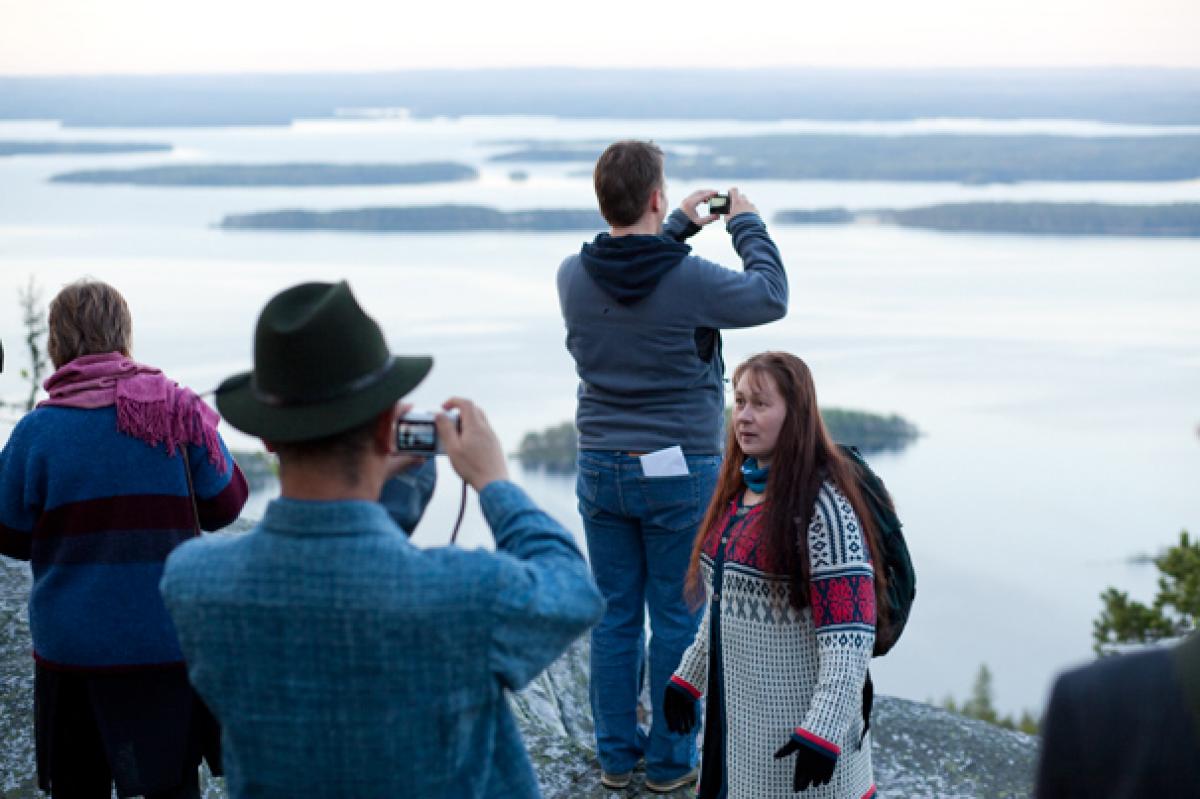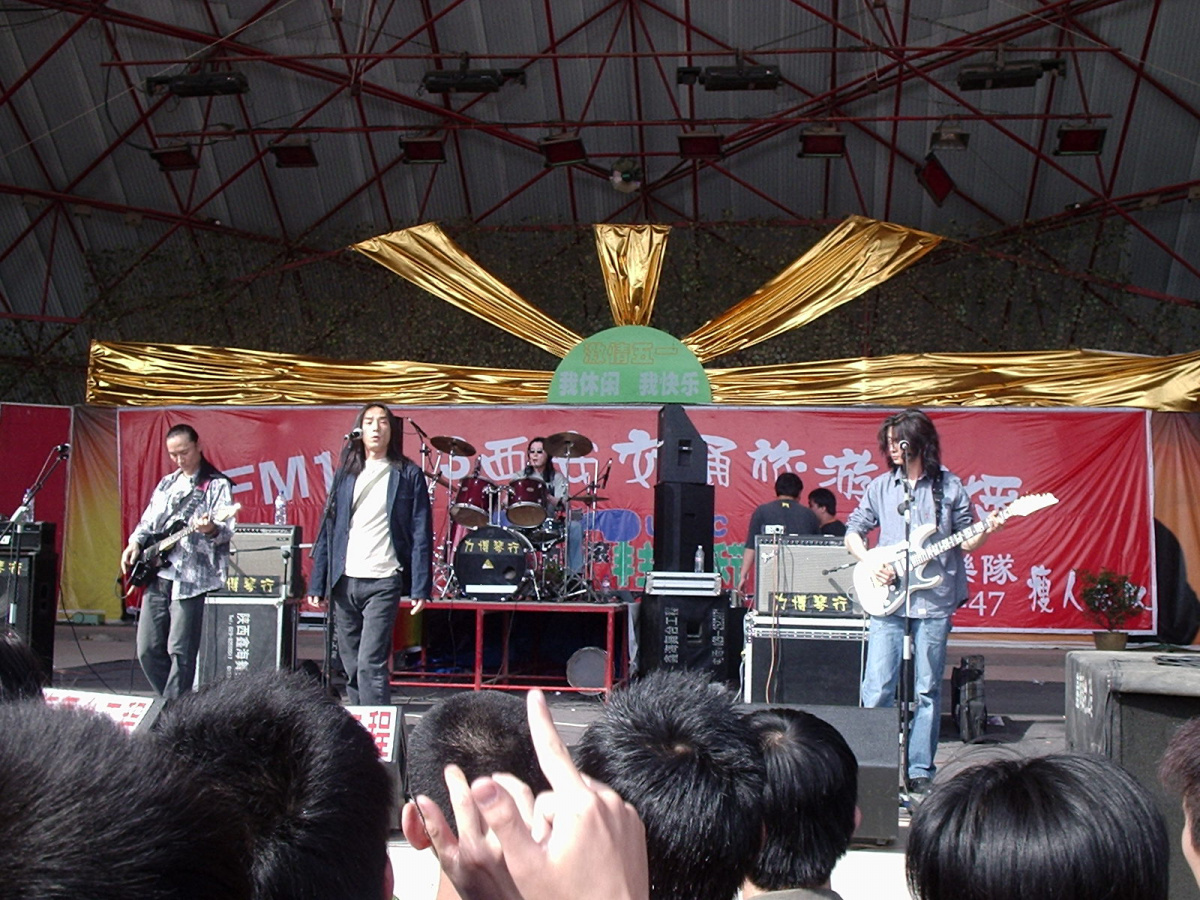Fuelled by the new sounds that entered China's illegal doorways, and driven by a desire to move beyond the stereotypical hard rock idiom, new bands started to experiment with different sounds. Today, sounds ranging from hardcore punk to deep house can be heard from Urumqi to Beijing. Let's get dakou'ed!
By the end of the twentieth century a new generation emerged in urban China, named after the cut CDs available at illegal markets in Chinese cities. The cut on the margin of these «dakou» CDs, as they are called in Chinese, has brought this young generation to the centre of global music culture. One of its followers writes on a website: «When Americans fiercely give themselves a cut, they also give the world a possibility of communism and unity. Our government doesn’t encourage 1.3 billion people to listen to rock and roll. «Dakou» products usher a million Chinese youth into a new wave, a new listening sensibility, a new awareness, a new mind and a new set of values.» «Dakou» stands for far more than just CDs that infringe copyright legislation; it stands for a lifestyle very much in vogue among China’s urban youth.
To be dakou is to be both global in terms of music and local because of the cut. The cut deforms the circle; something is missing yet, as a listener, you get more, because you enter a domain of illegality. Dakou is not just a metaphor for the ambiguity of globalized popular music. The CDs also open a new era for what is termed in Beijing the New Sound Movement. Rock, as we know it, already has an established history in China, with Cui Jian its 1980s pioneer. Later, in the early 1990s, bands such as Tang Dynasty and Black Panthers broadened the sonic spectrum.
Dakou CD
By the mid-1990s, the disturbing noise of electric guitars had somehow faded away, as had the long hairdos of Chinese boys (- to have your own e-mail account is now a more convincing ticket to high modernity). Fuelled by the new sounds that entered China’s illegal doorways, and driven by a desire to move beyond the stereotypical hard rock idiom, new bands started to experiment with different sounds. Local record companies such as Modern Sky and New Bees quickly captured the moment, producing albums from the New Sound Movements’ protagonists such as Sober, Supermarket, Hu Mage, The Fly, and NO. Today, sounds ranging from hardcore punk to deep house can be heard from Urumqi to Beijing. China rocks, but what exactly is being rocked?
Travelling Mythologies
It is tempting to interpret rock in China in terms of political rebellion. Communism might have faded away, yet the role of the Chinese Communist Party has anything but diminished. Can rock be considered the renewed rage against the Party machine? However attractive such a romantic reading might sound – it is after all nice to see dominant ideologies subverted while safely seated in our academic chairs – the world of rock in China is not univocal.
The rebellious aura of rock is produced by what I call «rock mythology». The narratives that constitute this mythology includes the ideas that rock is tough, is subversive, is a subculture, is authentic, is anything but pop and is non-commercial. These narratives are constantly reproduced by musicians, audiences, producers, academics, and journalists. The mythology is not quintessentially Chinese. Since the West is regarded as the centre of rock music in popular and academic discourse, the mythology has its imagined roots in the Western (and in particular, British and American) soil. What happens when such a mythology travels to China?
In order to trace the politics of rock in China, I will briefly introduce the hardcore punk band 69 and the Britpop band Sober. Revealing the importance of the West to rock in China, these generic labels are used by the bands themselves. But, while 69 argues for a Sinification of rock to claim a difference with the West and thus secure its authenticity, Sober opts for a post-modern and cosmopolitan image devoid of Chinese characteristics. Both bands, however, share a similar goal: to put China on the global map of pop music.
The scene that might come closest to the ideal embodiment of the rock mythology is hardcore punk. «Chinese people need punk», says singer Jacket of the band Sober Peter from 69. «They need punk to fight for what they want. If you don’t want to be a slave, you should be punk.» In Peter’s view, punk liberates the obedient Chinese self, and allows one to scream out (as he does, singing angrily that it’s ‘all fucking bullshit’), unhindered by notions related to musical talent or by suffocating cultural traditions. You can simply do it yourself. But then, British punk bands did this years ago. According to Peter, the music needs a touch of Chineseness to make it real: «Our music is British punk combined with the Cultural Revolution. I also use traditional Chinese music, because I think punk is white music.» Here, Peter retreats to the safe and common ground of cultural essentialism. In order to authenticate his rock under the scrutinizing eyes of Western journalists, film crews, and academics, he adds Chinese elements. He recalls ancient China (reprising the cliché of a long tradition) and communist China (the revolutionary past), images that have proved fruitful sources for the Sinification of rock culture.
But bands that rock less hard – such as Sober – are not as eager to make their sound Chinese. Instead, they express a desire to join a global sonic world, with competitive sounds that just happen to come from China. In the video for their single «Very Good?!», the band dresses up like the Beatles, adding an element of pastiche and irony to their image. The lyrics are playful, rather than confrontational. Singer Shen Lihui sings cheerfully «To whom do I give Monday and Tuesday?» Reflecting on the current pace of change in Beijing, Shen comments: «I don’t think it is necessary to add elements like an erhu (spiked fiddle). Beijing has become very internationalized. I feel some foreigners are simply interested in something strange, something exotic. Music should be true to modern life.» Shen is critical here of the Western gaze on China, and in his desire to counter this gaze he developed his Britpop sound by the early 1990s. In 1997, he founded the record company Modern Sky, which not only hopes to promote Chinese rock internationally, but also to invert the global power imbalance by contracting bands from London.
To be local sells globally, while to be global sells locally. Hence, the punk of 69, with its Chinese characteristics, has frequently caught the attention of Western media, whereas the cosmopolitan sound of Sober sold well in China, but less so in the West. What links virtually all Beijing rock bands is their dislike of pop from Hong Kong and Taiwan. New Pants’ vocalist Peng Lei’s comments on pop are widely shared by his colleagues: «Cantonese Pop is not real music. There must be something in the lyrics that touches the audience, there must be something authentic and sincere.» Cantonese Pop is considered fake and commercial, the sweet and profitable sound favoured by record companies. In saying this, rockers reify the stereotype that Hong Kong and Taiwan are merely places of commerce that lack real culture. Their critique resonates with the widely shared image of Beijing as the true centre of Chinese culture.
The Paradox of Rock
Two key dichotomies underlie the politics of rock in China: the West versus the non-West, and rock versus pop. The rock mythology travels well to China, given the insistence of bands to make real music that comes directly from the heart. What is being rocked in China is not so much the political, but more the notion of rock itself and the construction of Chineseness. Rock opens up a domain for a generic and cultural war of positions. Rock in China is thoroughly dakou’ed: it is both «typical» Western and at the same time «typical» Chinese. Sober’s insistence on making international music challenges local uniqueness, yet their wish to market rock beyond the Chinese mainland echoes the Party desire to place China back on the map of world politics. The punk of 69 challenges prevailing norms on obedience and harmony, yet in their insistence of making punk with Chinese characteristics, the band comes closer to essentialist ideas on Chinese uniqueness, ideas fervently promoted by the Party. Rock in China is both rebellious and compliant. It is as global as it is local. Only when we seriously consider such paradoxes will we be able to understand the power of rock, a power that is far more ambiguous than the accompanying mythology wants us to believe.


